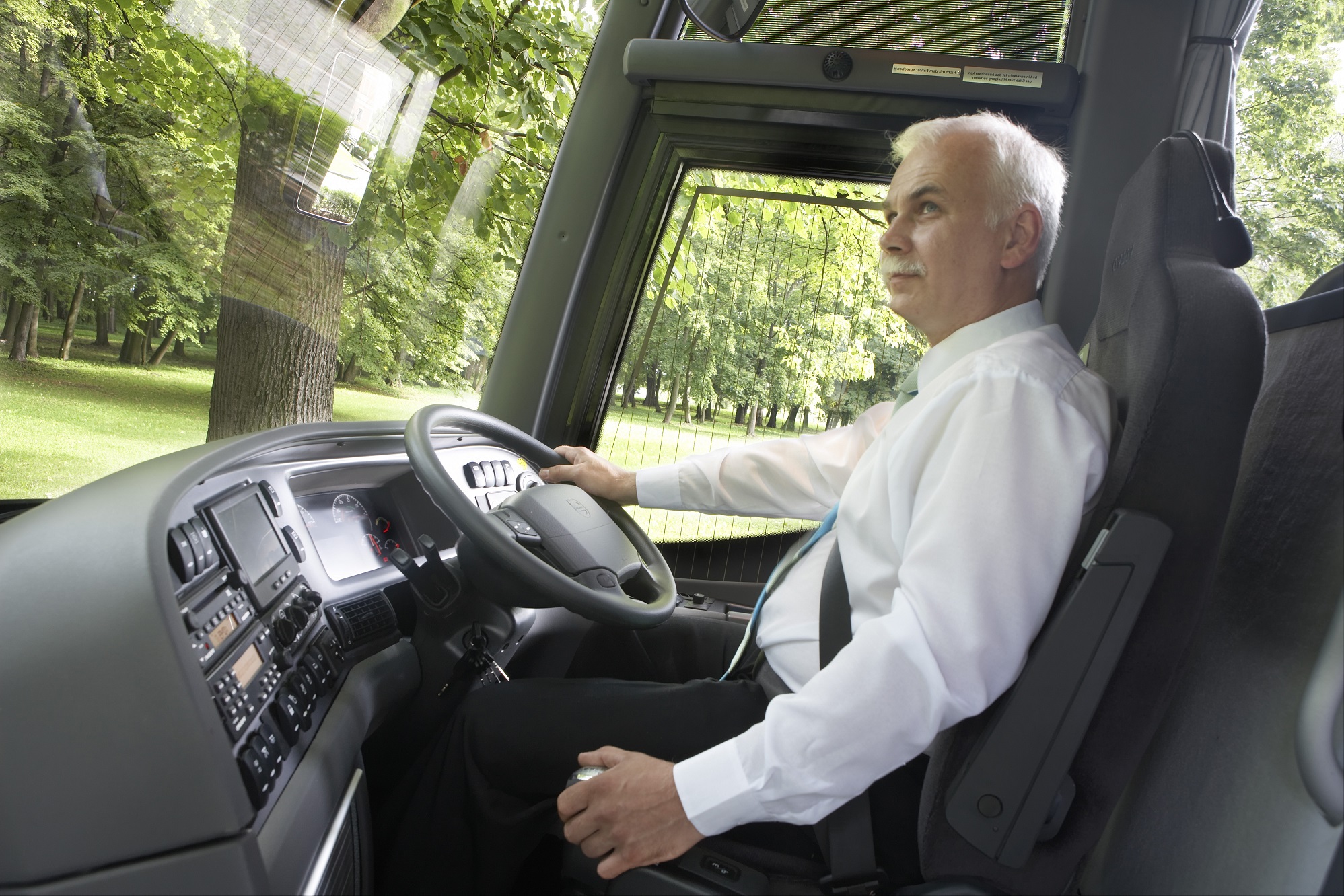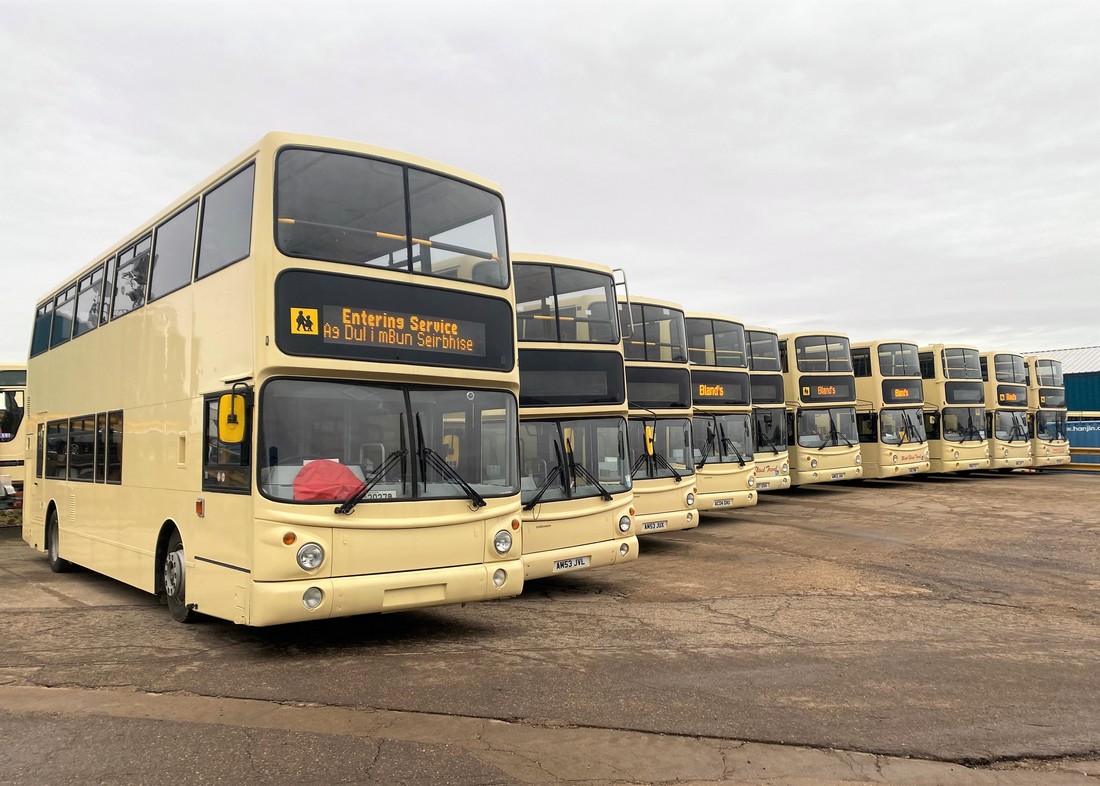Overall business confidence for 2023 among a sample of coach and bus operator representatives remains the same as it did in spring 2021, but that is against a backdrop of opinions on that outlook having become more polarised over the intervening period, research has revealed.
A sample of senior industry figures from small, medium and large operators – including community transport organisations (CTOs) – were questioned by routeone in late 2022. Most are in the UK with a handful in Ireland. 74% of respondents run no more than 20 vehicles. In addition to business confidence, questions explored recovery from the pandemic, the driver shortage and recruitment, and planned investment.
In the key business confidence metric, 45% of respondents described themselves as either slightly optimistic (31%) or very optimistic (14%). 33% are either slightly pessimistic (22%) or very pessimistic (11%), with the remaining 22% in a neutral position.
Overall, there is a 0.17 confidence interval, identical to the position in April 2021. However, the strength of views has increased in the meantime. 2021 saw a higher percentage of ‘slightly’ or neutral responses.
Industry optimism is greater in coach than in bus
Confidence levels were broken down into coach, bus and community transport. 22% of coach operator respondents say they are very optimistic, and a further 27% are slightly optimistic. 5% are very pessimistic and 24% are slightly pessimistic.
Predictably in view of ongoing uncertainty around bus revenue funding, businesses in that sector are more cautious about 2023. Only 8% of representative there are very optimistic; a further 30% are slightly so. 13% are very pessimistic, and 23% slightly pessimistic. Among CTOs, 15% are very pessimistic and 7% are slightly so. 11% are very optimistic and 41% are slightly optimistic.

Fleet size also plays a part in the extent of confidence. Among respondents with over 100 vehicles, 75% are optimistic, albeit all only slightly so.
For those with 51-100 vehicles, overall optimism is at 72%, made up of 29% who are very and 43% slightly. For 21-50 vehicles the overall optimism score is 42%; 19% are very optimistic and 23% slightly so.
Of representatives of operators with 11-20 vehicles, 52% are optimistic (11% very, 41% slightly), and for 6-10 vehicles, the figure is 49% (22% very, 27% slightly). The smallest operators with 1-5 vehicles have the lowest optimism rating, at 38%; just 8% are very optimistic and 30% are slightly so. All but one fleet size category sees optimism outweigh pessimism, and in no category are more than 42% of respondents pessimistic.
Recovery results variable across the sector, research shows
On business recovery, 46% of respondents say that theirs has either already returned to pre-pandemic levels or will do so in 2023. Of that figure, 23% of all those surveyed see recovery as complete, 8% believe it will be so within six months, and a further 15% within a year. Of other responses, 23% believe that recovery will occur within two years, 15% within three years and 16% beyond that.
Broken down to fleet size, results for recovery are not dissimilar to those for confidence. The smallest operators, at 1-5 vehicles, have the second-lowest proportion of respondents who say that their operation has already recovered, at 13%.
In both the 6-10 and 11-20 categories, that figure is 30%. It drops to 26% in 21-50 and comes in at 43% for 51-100. No operator with more than 100 vehicles believes that their business has yet fully recovered.
Significant worry around driver crisis hurts industry optimism
On the pressing issue of driver shortages, there is little hope of the problem easing during 2023. Only 17% of all respondents believe that availability will improve this year, although respondents from operators with over 100 vehicles take a much different view. 75% of them believe that the shortage will recede, compared to just 11% of those with 11-20 vehicles as the lowest return.
In an equally worrying statistic, 79% of all respondents say that they have had to turn down work due to that challenge. For operators with between 6-10, 11-20 and 21-50 vehicles, the individual figures are even worse, at 89%, 93% and 84%, respectively. Among the smallest operators with 1-5 vehicles the return is 67%, for 51-100 it is 57%, and for over 100 vehicles it is 75%.
Suggesting that the shortage is leading to changed recruitment approaches, 78% of all respondents say that they have explored new ways to attract drivers. Of businesses represented with 1-5 vehicles the rate is 50%; with 6-10 vehicles, 73%; with 11-20 vehicles, 70%; with 21-50, 90%; with 51-100, 86%; and for over 100 vehicles, every respondent has done so.
Industry investment plans are led by vehicle purchases

Vehicles are the most common focus of investment plans for 2023, with 32% of respondents expecting to purchase new models and 39% used examples.
16% of those questioned plan to invest in infrastructure and 20% in new technology. 24% are likely to invest in none of these areas and 18% are unsure of their likely subject of focus.
For respondents planning to buy new vehicles, diesel remains by far the most popular source of power. Of those that answered yes to this question, 74% expect that their purchase(s) will be diesel fuelled.
However, 15% of respondents indicate that battery-electric propulsion is on the cards, and 4% are looking at hydrogen fuel cell-electric. 6% are likely to be in the market for diesel-electric hybrid, while the remaining 1% are unsure.



























